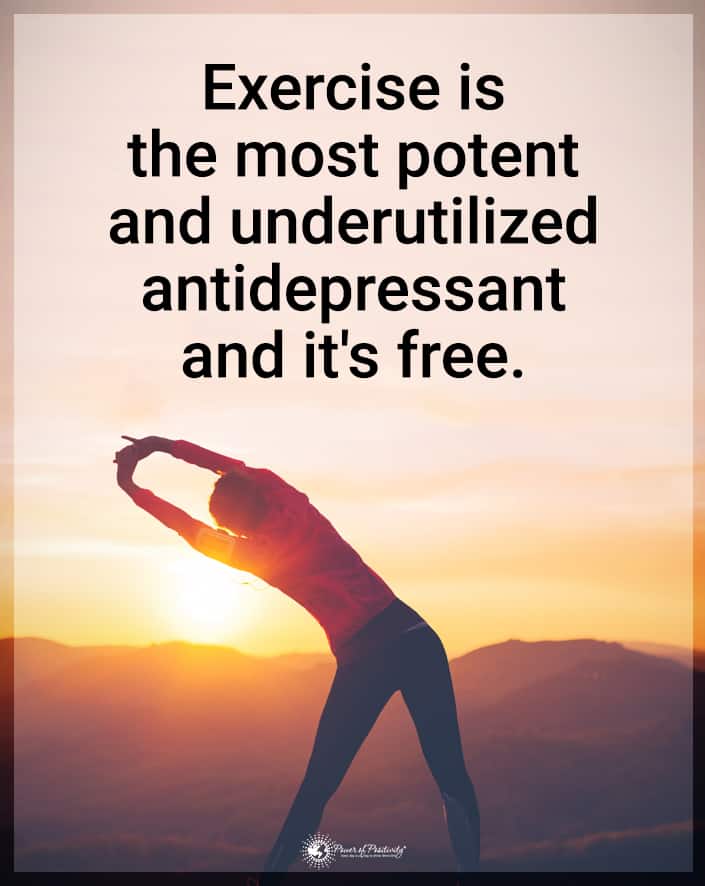Dancing provides a full-body workout while also stimulating the mind. Not to mention, it’s good for your soul as well since it gets you into a “flow” state. It’s no wonder why so many people have taken up dancing instead of tedious gym workouts.
There are many different types of dance, from Zumba to hip-hop to contemporary and more. No matter what style you prefer, dancing offers something for pretty much anyone wanting to make exercise fun.
Many people look at exercise as something to avoid because they associate it with pain or punishment. It’s about time to reform your relationship with activity, as it’s been a part of humanity since the dawn of our existence.
The only difference is that we have to put in the effort to sweat consciously in our modern world. Of course, manual labor such as farming or construction work is the exception.
Humans naturally moved more to acquire food, water, or other resources in the past. We didn’t have the luxury of sitting in climate-controlled environments or running to the grocery store for food.
Fast forward a few hundred years, and most of us sit in offices or stand in one place all day. It’s not exactly helping our bodies or minds, but we don’t have a choice. So, what can we do about this predicament? If you’re not a fan of exercise but still want to move, dancing might be your cup of tea.
Science Explains Why Dancing Is So Good for the Mind and Body
Dancing can improve all aspects of health (mental, emotional, and physical). Below, we’ll go over why dancing might reign supreme when it comes to exercise.
Physical Benefits of Dance
- Enhances agility and flexibility. Many of us have stiff, inflexible bodies due to our sedentary lifestyles. Aging and performing repetitive movements (ex. working in a factory) can also cause stiffness and joint pain. However, it can loosen up our tense bodies and increase vitality. One study found that cross-country skiers who engaged in several months of dance training had improved spinal flexibility and joint mobility. Their speed and agility also increased.
- Improves cardiovascular health. Dancing may offer the perfect remedy if you’re worried about your heart health. Research reveals that frequent, moderate-intensity dancing may reduce early death from cardiovascular disease. Researchers found that when compared with walking, dancing showed more pronounced benefits.
- It helps you lose weight. Many people today have a hard time losing weight due to a lack of movement. We don’t get enough chances to move our bodies during a regular daily routine. However, dancing for even thirty minutes a day can help lose weight. Because dancing combines aerobic exercise with muscle strengthening, it burns insane calories. For instance, one study found that one hour of mid-to high-intensity Zumba can burn between 300 and 900 calories!
Benefits for Emotional Health
- Improves mood and provides stress release. Nothing can relieve stress quite like dancing your heart out. When the music is pumping, you tend to forget your worries, and you’re fully in the moment. One study found that dance therapy also lowered depression and stress in people with conditions such as breast cancer and Parkinson’s, in addition to students. Another study from 2014 discovered that dancing increases endorphin release more than other types of exercise and lowers cortisol levels.
- It offers a chance to socialize. If you’re taking group classes at a gym, it allows you to make friends while getting your groove on. Multitasking isn’t always a bad thing.
- Improves self-esteem and confidence. Any time you lose weight, you feel more comfortable in your skin. Dancing offers that benefit along with the satisfaction of learning a new skill. Sure, you could shed some pounds running on the treadmill, but dancing is arguably a more fun way to get the job done.
Mental Benefits of Dancing
- Boosts memory and cognitive abilities. One study found that Zumba — the Latin dance-inspired cardio routine— helped improve working memory, motor function, and depressive symptoms in females with fibromyalgia. Another study discovered that women aged 57-90 who participated in Zumba for six weeks showed increased brain power and cognition. Some doctors even prescribe dance classes for patients recovering from brain injuries. The activity can improve our mental stamina and energy levels.
- Reduces risk of dementia. Since dancing improves memory, it’s no surprise that it can lower dementia risk as well. A paper published in the Journal of the American Geriatrics Society examined the effect of dancing on mental health. The researchers analyzed 32 studies that included over 3,500 people aged 50 to 85 to determine whether mind-body activities such as dancing, tai chi, and yoga could enhance adults’ cognition. The team found that aging adults who participated in mind-body exercises like dancing had better cognitive function than sedentary people. They found that 60 to 120 minutes of tai chi or dance per week improved cognition from all mind-body practices more than any other workouts, even in adults who already showed a mental decline. These exercises also improved cognitive flexibility more than the other mind-body activities.
- Increases white matter in older adults’ brains. Another study from 2017 discovered that dancing increases white matter, which usually declines due to aging. Having white matter can improve cognition and processing speeds.

Final Thoughts on How Dancing Heals the Mind and Body
As you can see from the studies above, dancing offers numerous benefits for the mind, body, and soul. Getting your body moving isn’t always enough to feel better, especially while doing repetitive, boring gym workouts. However, engaging in a fun, stimulating activity like dancing loosens up the body and mind. It allows you to let go and move with the rhythm of the music, forgetting all your stress and worries.
It’s no wonder that Zumba and other movement classes have exploded in popularity in the last couple of decades. If you’re looking for a new exercise to shake up your routine, consider dancing to add a little pep to your step!





















